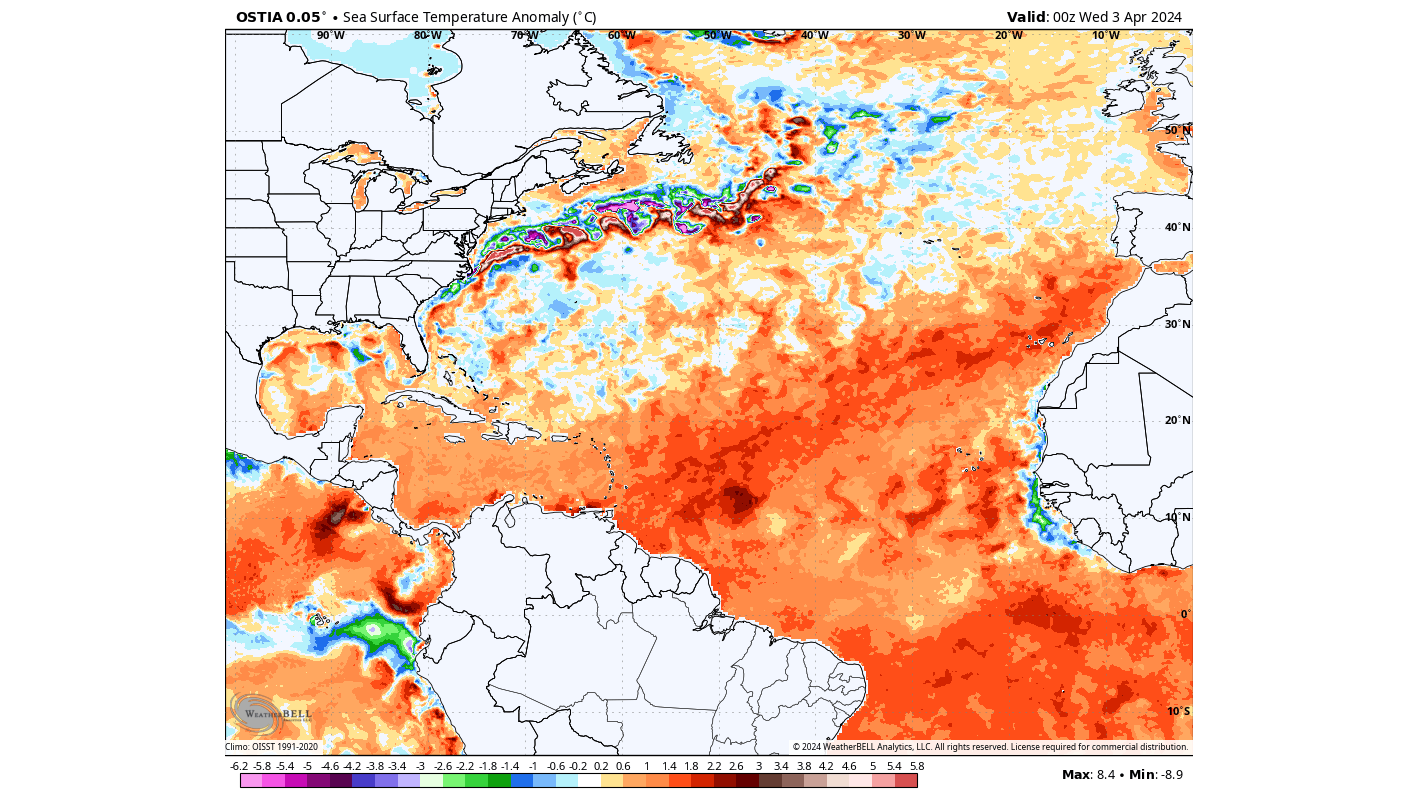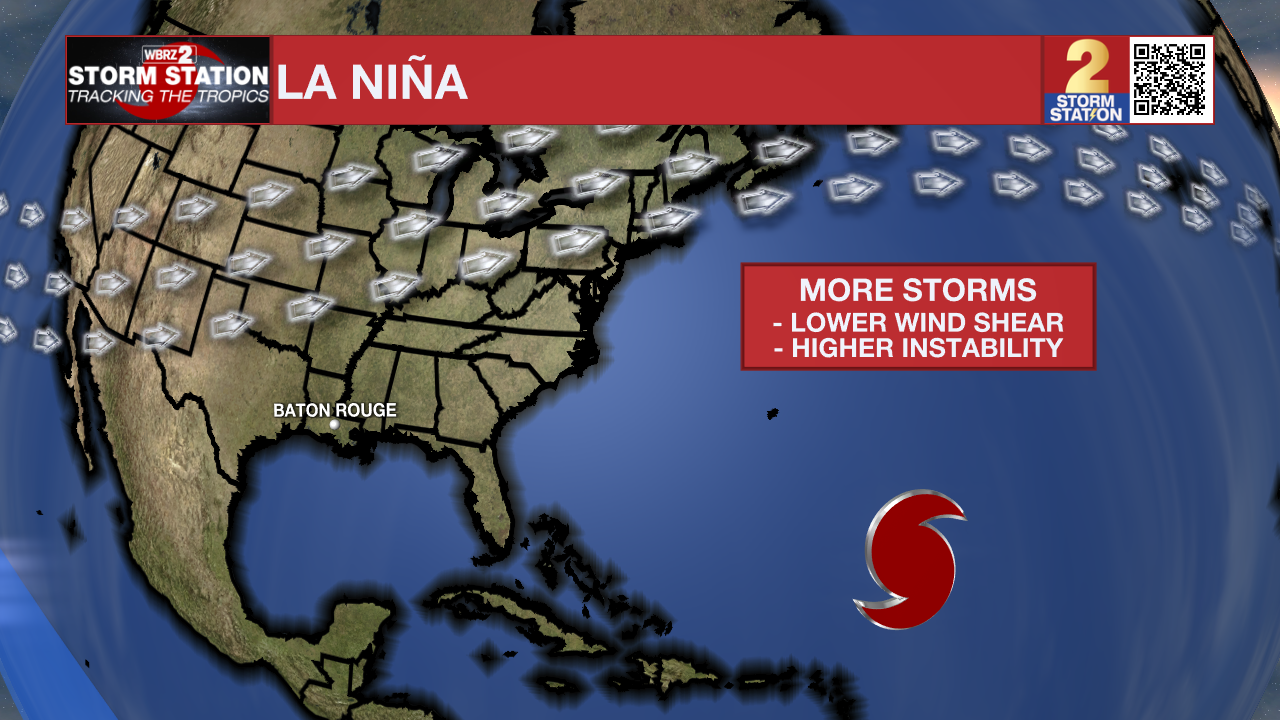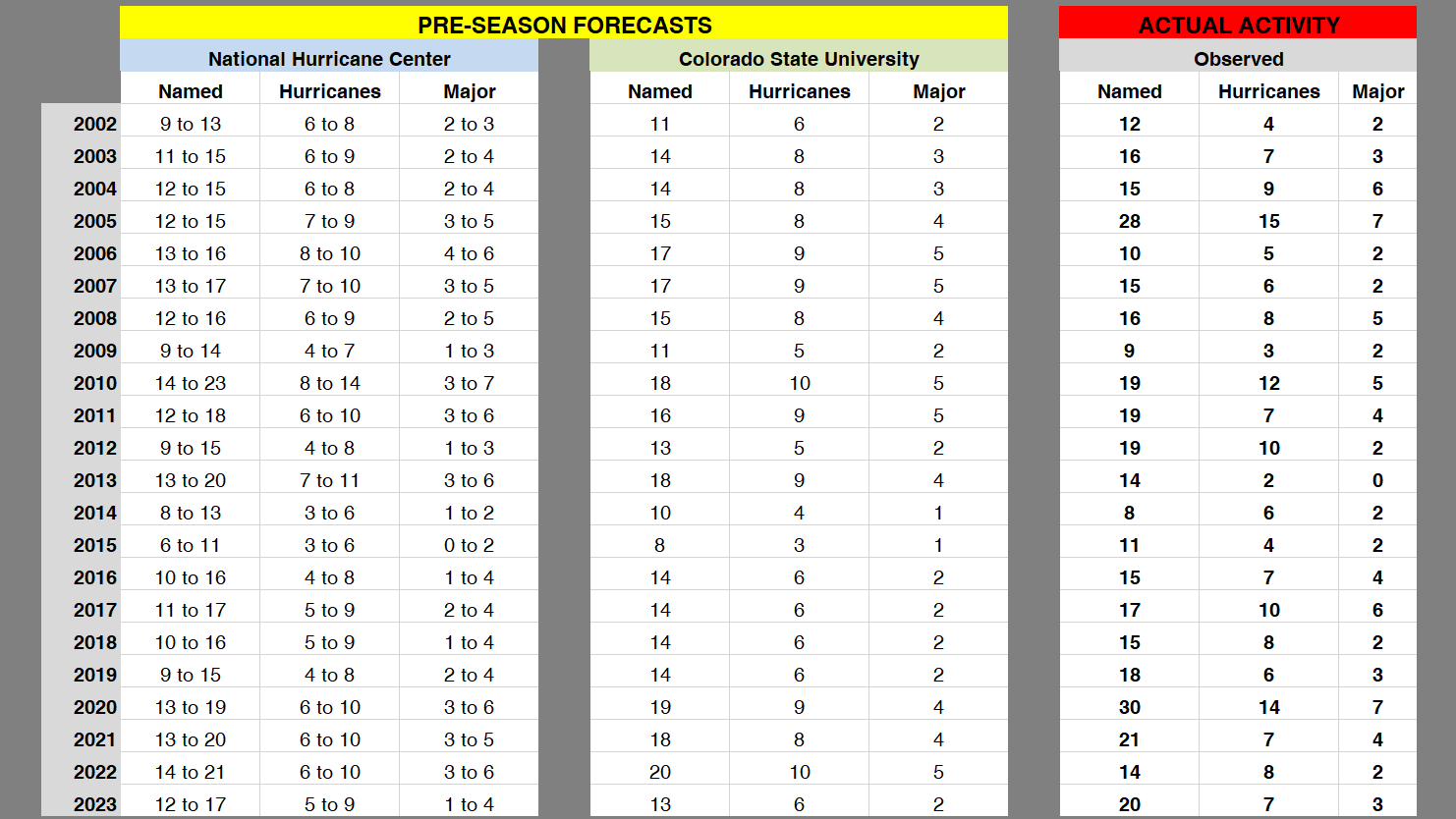The first 2024 Hurricane Season Outlook is in, and it's a big one
The first outlook for the 2024 hurricane season has been posted. Colorado State University has issued its most aggressive pre-season forecast ever, calling for well above average activity. The outlook is for 23 named storms, 11 hurricanes and 5 major hurricanes.

Sea Surface Temperatures as comapared to 30-year average (April 4, 2024)
Dr. Philip Klotzbach and the research team cited several reasons for the forecast of an active season such as well above average sea surface temperatures. Additionally, the Climate Prediction Center assigns a high likelihood that a La Niña pattern will develop this summer.
As defined by the National Oceanic and Atmospheric Administration (NOAA), El Niño and La Niña are the warm and cool phases of a recurring climate pattern across the tropical Pacific—the El Niño-Southern Oscillation, or “ENSO” for short. Keep in mind that El Niño and La Niña do not “cause” any one specific weather event; rather the two phases of ENSO influence change in global climate patterns that then increase the likelihood of specific weather events. Once again, ENSO is not “to blame” for any one storm system, temperature anomaly or hurricane.
Trending News

La Niña typically increases the amount of storm activity in the Atlantic basin because it decreases the amount of vertical wind shear. Vertical wind shear references strong winds in the upper levels of the atmosphere that typically work to prevent circulations like tropical systems from becoming fully formed.
The forecast is based on an extended-range early April statistical prediction scheme that was developed using over three decades of past data. These seasonal forecasts were originally developed by the late Dr. William Gray, who was lead author on these predictions for over 20 years and continued as a co-author until his death in 2018. You can review the entire prediction, the scientific explanation and the reason such a forecast is made, RIGHT HERE. Seasonal updates are issued in June, July and August.

Pre-Season Forecasts from NOAA and CSU since 2002 as compared to actual activity observed in Atlantic Basin
Since 2002, these pre-season predictions have shown modest accuracy. The Colorado State University research team outlooks fall within a reasonable margin of error (3 for named storms, 2 for hurricanes, 1 for majors) about 60% of the time. The NOAA outlooks have been only slightly better than a coin flip.
The researchers at Colorado State University and the Storm Station remind that “it only takes one hurricane making landfall to make it an active season for you,” so prepare accordingly. There have been seasons with a lot of storms but few impacts to land and seasons with few storms but a lot of impacts to land. For more on the season ahead and preparedness, visit wbrz.com/weather and click on the hurricane center.


